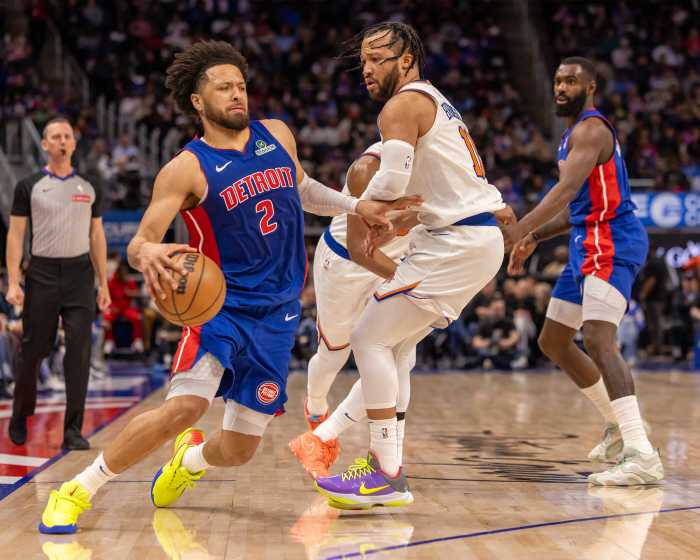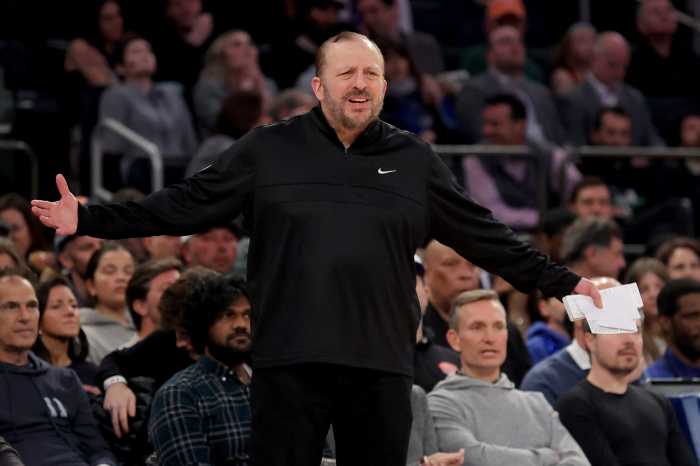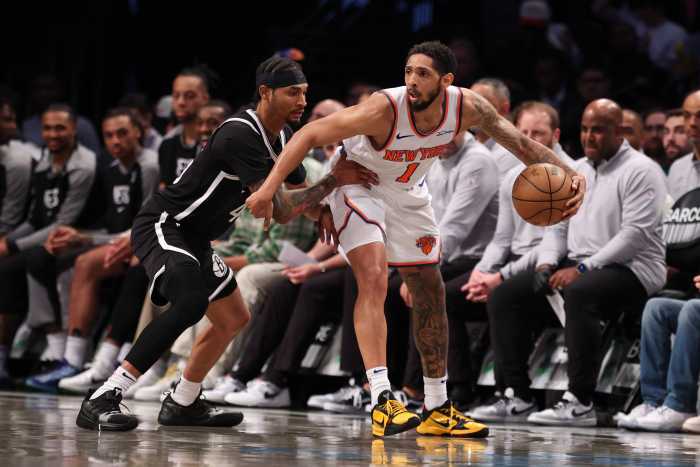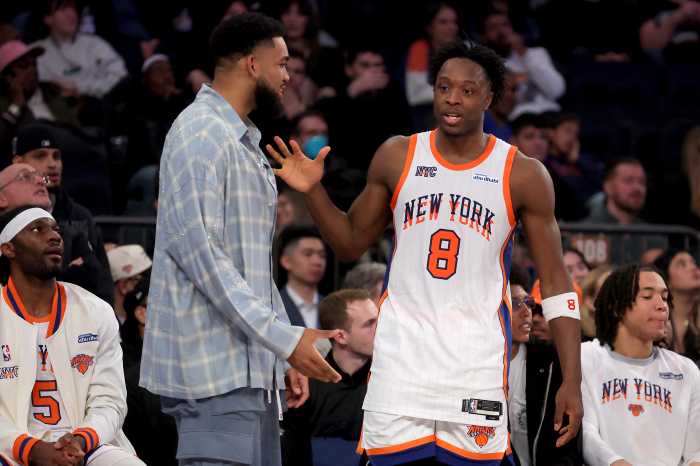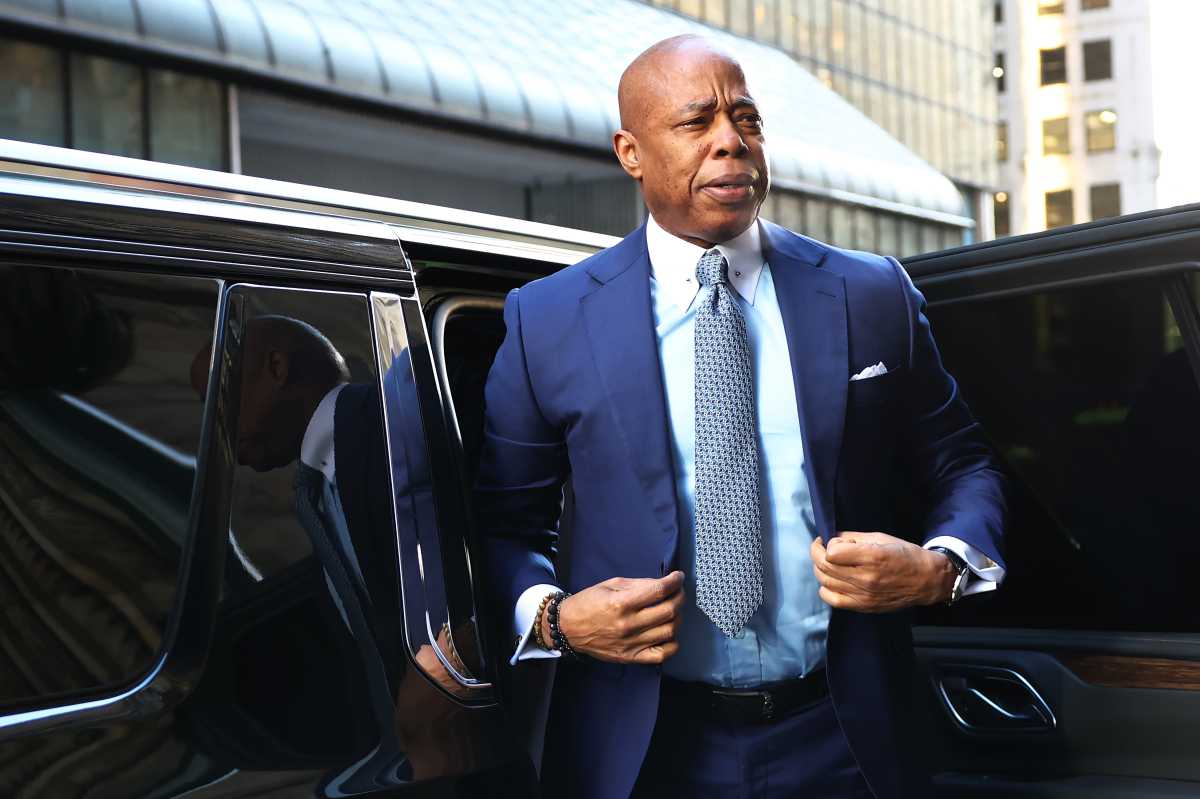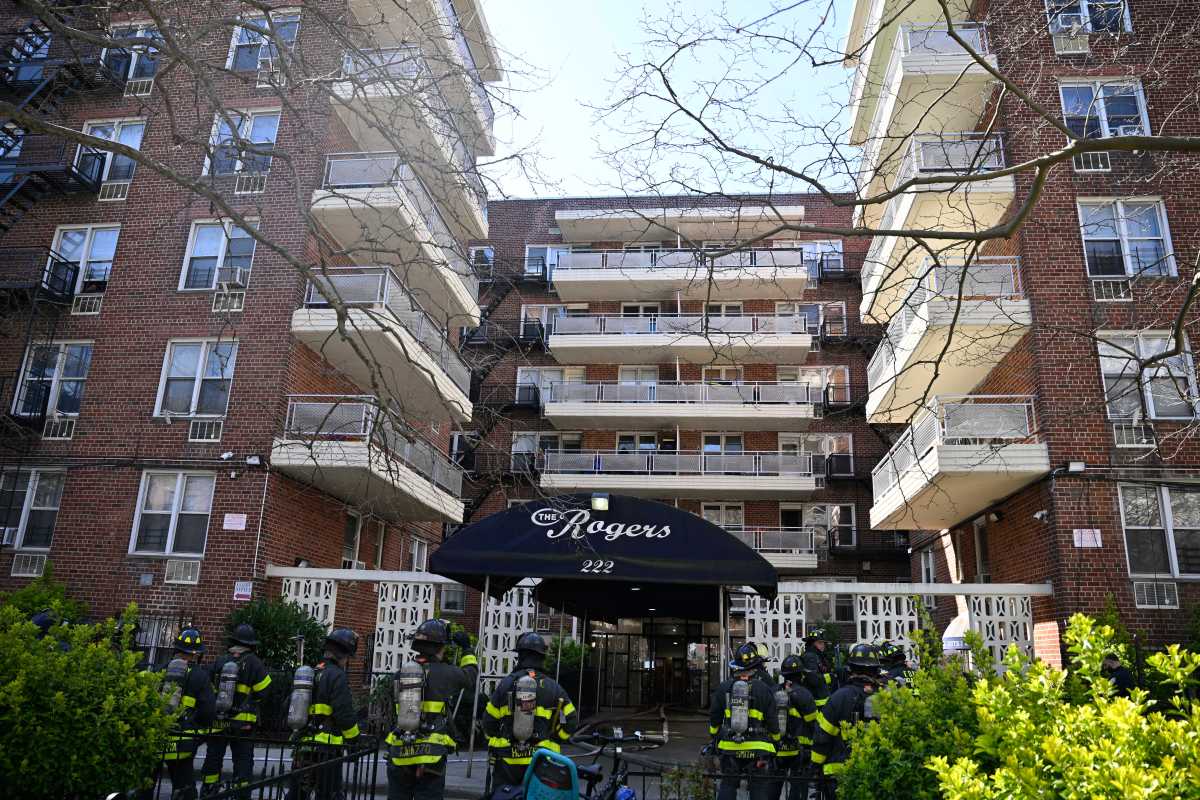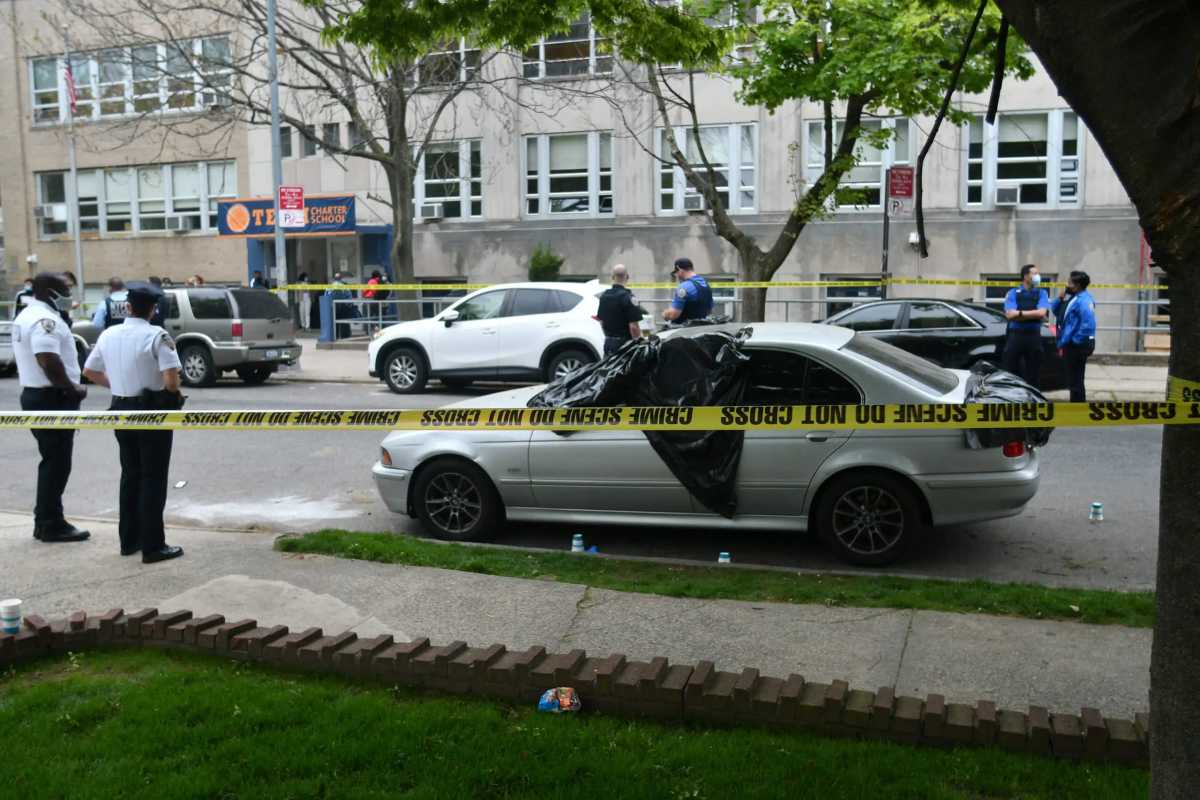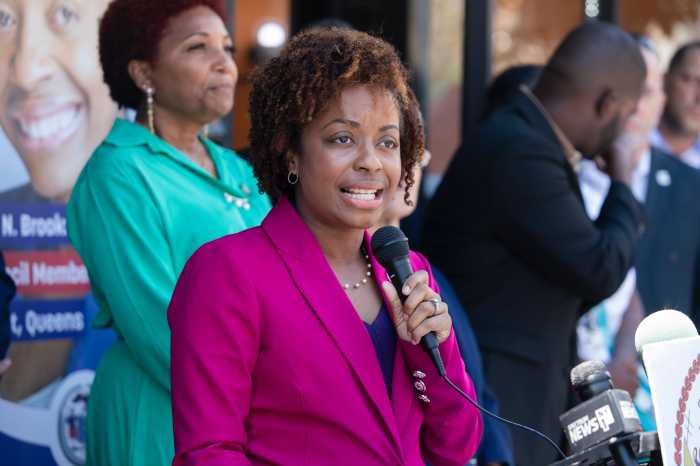Heading into the 2023 offseason, the New York Knicks have a plethora of questions to answer but one of them is what they should do with Obi Toppin.
Since the Knicks picked up his fourth-year option earlier in the year, Toppin is set to make $6.8 million next season, but whether or not the Knicks look to sign him to a long-term extension, trade him, or let his contract run its course is one of the bigger storylines for the team.
The 8th overall pick in the 2020 NBA Draft, Toppin has had a forgetful career in a Knicks uniform up until this point; yet, very little of it can actually be attributed to him.
In 2019, the Knicks signed Julius Randle to a three-year, $62.1 million contract. In his first season in New York, Randle averaged 19.5 points, 9.7 rebounds, and 3.7 assists on 46% from the field. It wasn’t quite the contribution that the team hoped for from their 25-year-old key off-season acquisition, but it wasn’t terrible.
As a result, it was curious that the Knicks decided to select Toppin the with 8th pick considering he played the same position as Randle during his college career at Dayton. Both men were 6’9″ power fowards who didn’t space the court. Randle was coming off a year in which he attempted just 3.6 three-point attempts per game, the most of his career, and shot just 27.7%, while Toppin averaged just 1.6 attempts from beyond the arc during his two years at Dayton.
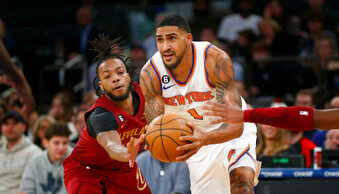
Perhaps the Knicks felt like Randle might not pan out. Perhaps they knew they were going to push Randle to be more of a shooter (he attempted 5.5 threes per game during the 2020-21 season), or perhaps they simply miss-evaluated Toppin.
Whatever happened, Toppin joined the Knicks and has remained buried on the bench behind Randle and watched as the Knicks signed Randle to an extension of his own.
In his third season in New York, Toppin averaged 7.4 points and 2.8 rebounds in just 15.7 minutes per game, which was actually a downgrade from the 17.1 minutes per game he played in 2021-22.
But it’s hard to blame Toppin for that. He changed his game to become the player that the Knicks needed, which is not at all the player he is.
The current roster needed floor spacing, and when Isaiah Hartenstein was signed to back up Mitchell Robinson, there were no minutes for Toppin as a “small ball center.” So, instead, he became a three-point shooter.
Toppin took 247 three-pointers this season, which meant that three-pointers made up 58.9% of his offense. That’s a crazy jump from the 35.7% mark from 2021-22 and an even wilder jump from who Toppin was in college. What’s more, Toppin was asked to use his athleticism and finishing ability less, finishing with just 52 dunks this year after having 102 last season.
In fact, just 28.9% of his shot attempts this year came within three feet of the basket, compared to 50.5% last season.
When you think about that, the Knicks’ decision to draft Toppin in the first place becomes even more confounding.
If they needed floor-spacing (they do and they did), they could have selected Devin Vassell, who went 11th to the Spurs, or Tyrese Haliburton, who went 12th to the Kings, or Tyrese Maxey, who went 21st to the 76ers. This season, Vassell shot 38.7% from deep on 7.0 attempts per game, Haliburton shot 40% on 7.2 attempts per game, and Maxey posted a ridiculous 43.4% mark on 6.2 three-point attempts per game.
While the 25-year-old New York native looked good in spot starts while Randle was injured, it’s become pretty clear that Toppin is not a primary focus on a healthy Knicks team.
Even Josh Zach Lowe of ESPN wrote that “it’s hard to see any marriage” between Toppin and New York.
“Toppin’s entire existence is running around for two short stints, jacking a few open 3s, and retiring to the bench. If he makes a couple of threes, he helped. If he goes 0-of-4, you forget he played. He has no chance to establish rhythm.”
With the Knicks needing to re-sign Josh Hart and Immanuel Quickley also eligible for an extension this offseason, Toppin isn’t a priority. That’s also without mentioning that starting shooting guard Quentin Grimes will be the next extension-eligible for the Knicks next season, so the cap is going to get tight quickly.
So if extending Toppin is unlikely, then what could the Knicks do?
One option is to trade him this offseason. He could be used, along with draft picks, to try and acquire a star player or since the Knicks currently do not have a draft pick in the 2023 draft, they could trade Toppin just to move into the draft.
Toppin alone might be enough for New York to move into the end of the first round, but if they include him and a future first-round pick or a second-round pick, they might be able to inch up the NBA Draft order and select a floor-spacing wing like Jordan Hawkins of UCONN, Brice Sensabugh of Ohio State, Jett Howard of Michigan, or Brandin Podziemski of Santa Clara.
During this year’s trade deadline, the Pacers and Knicks had a “loose framework” for a deal involving Obi Toppin and potentially Chris Duarte prior to the trade deadline, according to Ian Begley of SNY so perhaps the Knicks will reach back out.
“There were obviously ancillary pieces involved, draft picks involved, but they couldn’t get a deal done. Maybe they re-visit that at some point this off-season.”
The final possibility is that Toppin enters the summer of 2024 as a restricted free agent, which will allow him to sign with another team. If he’s offered a contract that the Knicks don’t want to match, they would simply let him walk. It’s the least dramatic of the three options but perhaps that makes it the most fitting for Toppin’s anti-climactic years in New York.
Whichever way it is, it appears very likely that the end is indeed near.
For more Knicks coverage, visit amNY Sports
Read more: Peter Laviolette Emerges as Strong Candidate for Rangers Coach



